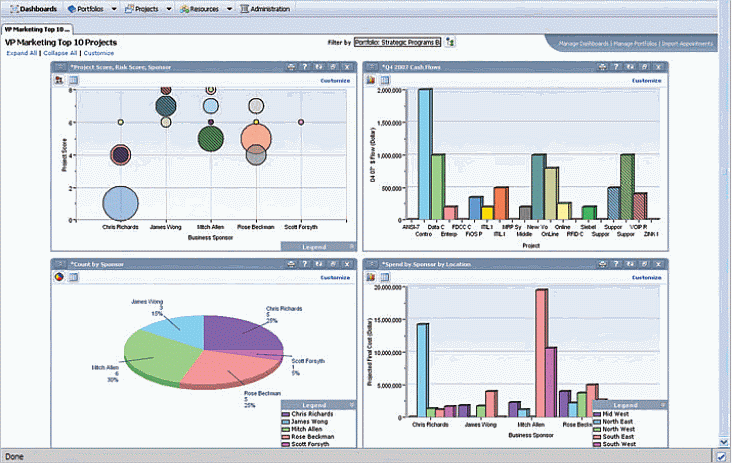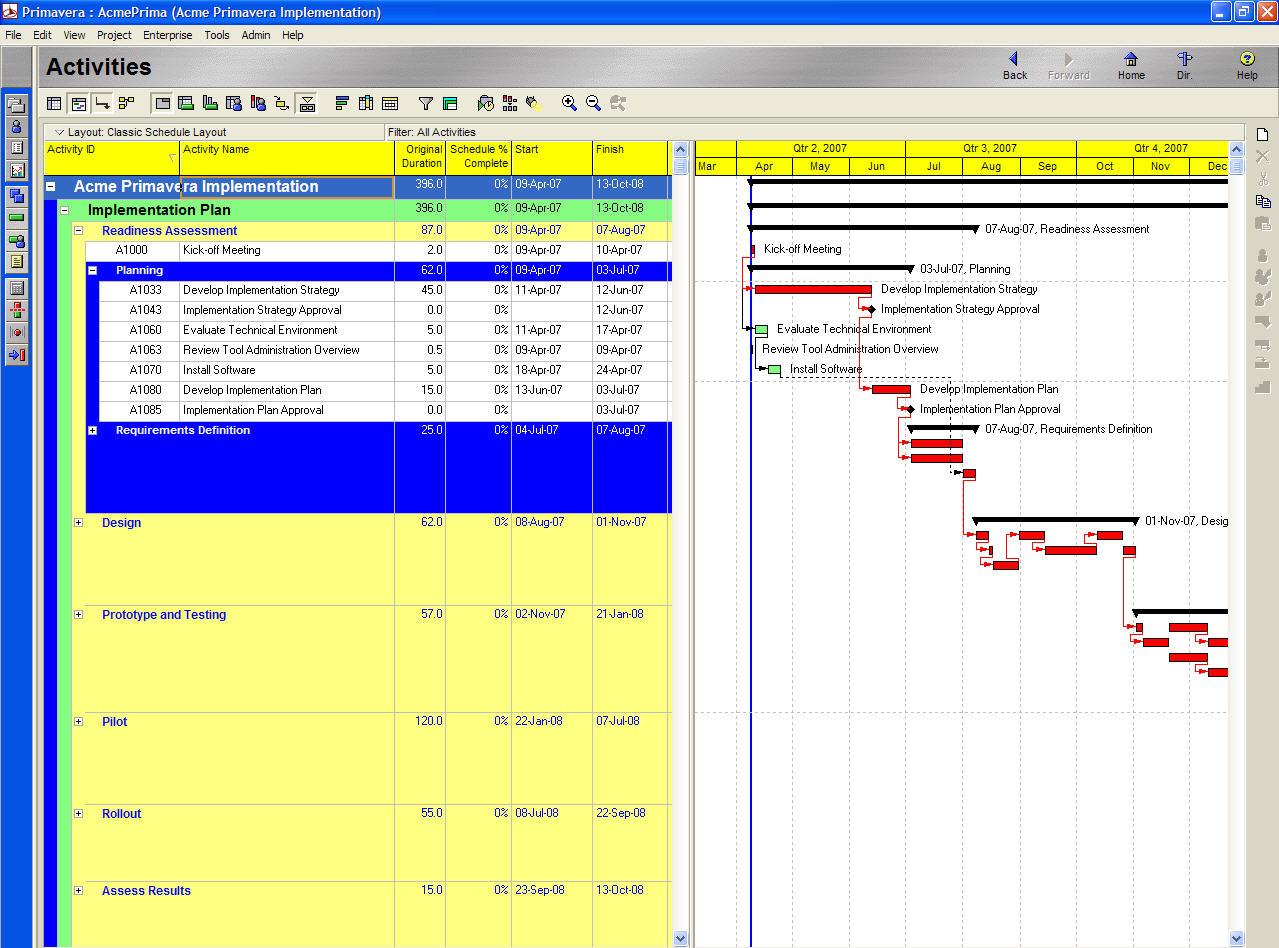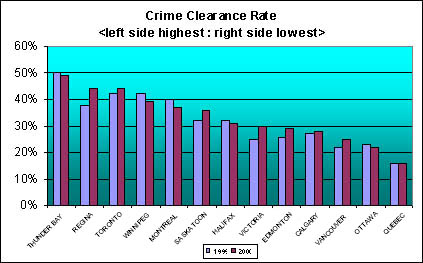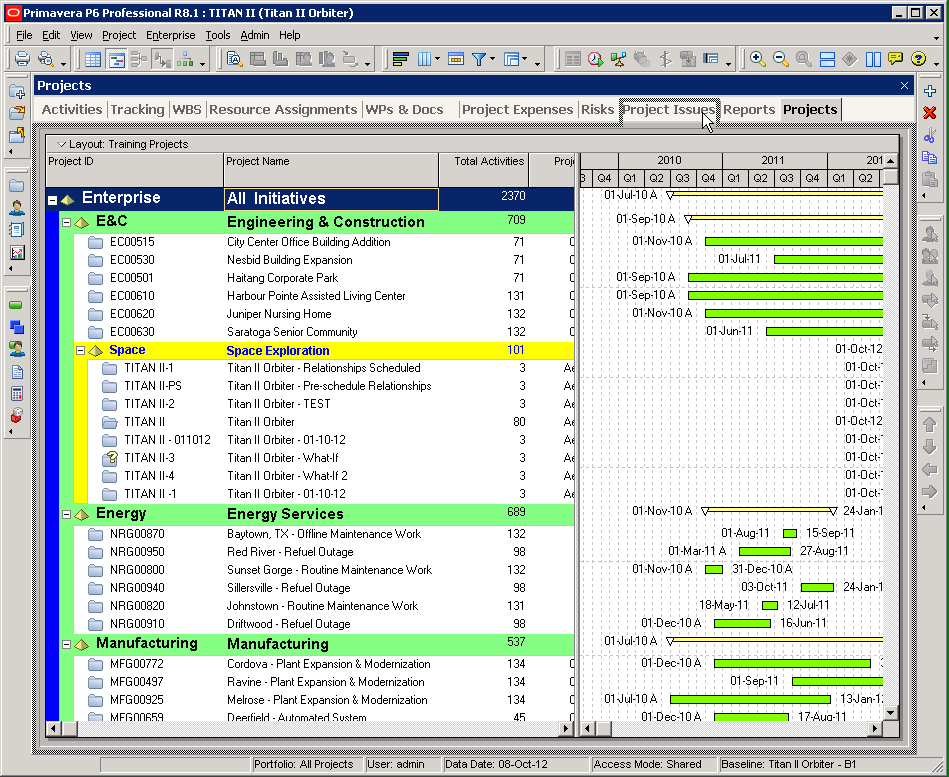Manage all types of projects with detailed cost control using separate cost control processes to track every dimension of project financials. View graphical cash flows. The Cost Sheet Dashboard provides rolled-up information from all project financials with drill-down into details. View and manage multi-year forecasts at the CSI division level or any other multi-level cost structure. Manage all contracts and change orders in detail. Ensure payment integrity. Leverage Transaction Visual Analysis to see all related cost transactions at a glance. Manage Project Schedule and Resources effectively and efficiently.
Advanced project cost management in primavera P6
Oracle’s Primavera P6 Enterprise Project Portfolio Management is the most powerful, robust and easy-to-use solution for globally prioritizing, planning, managing and executing projects, programs and portfolios. Primavera P6 Enterprise Project Portfolio Management is an integrated project portfolio management (PPM) solution comprising role-specific functionality to satisfy each team member’s needs, responsibilities and skills. It provides a single solution for managing projects of any size and adapts to various levels of complexity within a project. In addition, it intelligently scales to meet the needs of various roles, functions or skill levels in an organization and on a project team. This course builds on the student’s current knowledge, skills and application of project cost management using Primavera P6.
Learning Outcomes
Ability to implement global change – modify projects using advanced functionality.
Manage project cost effectively
Apply advanced scheduling techniques.
Implement earned value analysis.
Use top-down budgeting.
Assign codes.
Benefits
Assist project managers, cost control managers and cot controllers to use Primavera for integrate the cost with project schedule.
Apply the cost control techniques using Primavera including EVM.
Calculate percent complete. Importing and exporting project data.
Understand effective top-down/bottoms-up budgeting calculations.
Topics
Import and export data.
Update baselines.
Use Claim Digger.
Apply duration types.
Calculate percent complete.
Use earned value analysis.
Use top-down budgeting.
Apply tracking layouts.
Auto compute layouts.
Use top-down estimating.
View reflection projects.
Manage issues and risks.
Create a project with Project Architect.
Assign codes.
Use global change.
Advanced scheduling.
Prerequisites
Participants should be working in a project management environment and understand how projects are planned and controlled, including knowledge of the following subjects:
P102 Project Management in Primavera using P6 V8.3.
Project management processes.
Experience in the use of PCs and an understanding of the operating system.
Audience
This course is targeted at those who are seeking to develop their skills and knowledge in project budget and cost management.
Project manager (generic)
Project manager (industry specific)
Cost Control Managers
Project planners and schedulers
Project control managers
Project control engineers
Project team members
Project team leaders
Cost Control Engineers
Project coordinators
Planning and scheduling engineers
Quantity surveyors
Format
- Face-to-face delivery of theory.
- Facilitated discussions.
- Facilitator demonstrates the functions of the software using different mediums, such as PowerPoint slides, live software module-by-module view on screen.
- Individual activities.
- Structured Workshops
Our program design and delivery is based on adult learning principles and experiential learning techniques:
- Individual and group activities
- Short lecture sessions
- Using templates
- Practical and experiential
- Written activities
- Presentations










